
Roots
Hear the whispers carried on the wind, stories told not with ink, but with curl and coil, kink and wave. They speak of lineage, of resilience woven strand by strand into the very fabric of identity. For far too long, the inherent splendor of textured hair has faced a relentless tide of misunderstanding, a tide shaped by systemic biases that distorted its truth. This exploration seeks to peel back those layers, to look upon our coils and kinks not through the lens of imposed standards, but through the profound, undeniable truth of their ancestral wisdom and biological brilliance.
It asks ❉ In what ways did systemic bias influence perceptions of textured hair growth? It calls us to reconnect with the soil from which our tresses sprung, to understand their very beginnings before prejudice cast its long shadow.
The initial gaze, often born of unfamiliarity, quickly calcified into judgments, then policies, then ingrained societal structures. These were not innocent observations, but deliberate misinterpretations of a natural state, particularly around the growth patterns and appearance of textured hair. The very rhythms of our hair’s unfolding, from scalp to tip, became subjects of scrutiny and, ultimately, denigration.
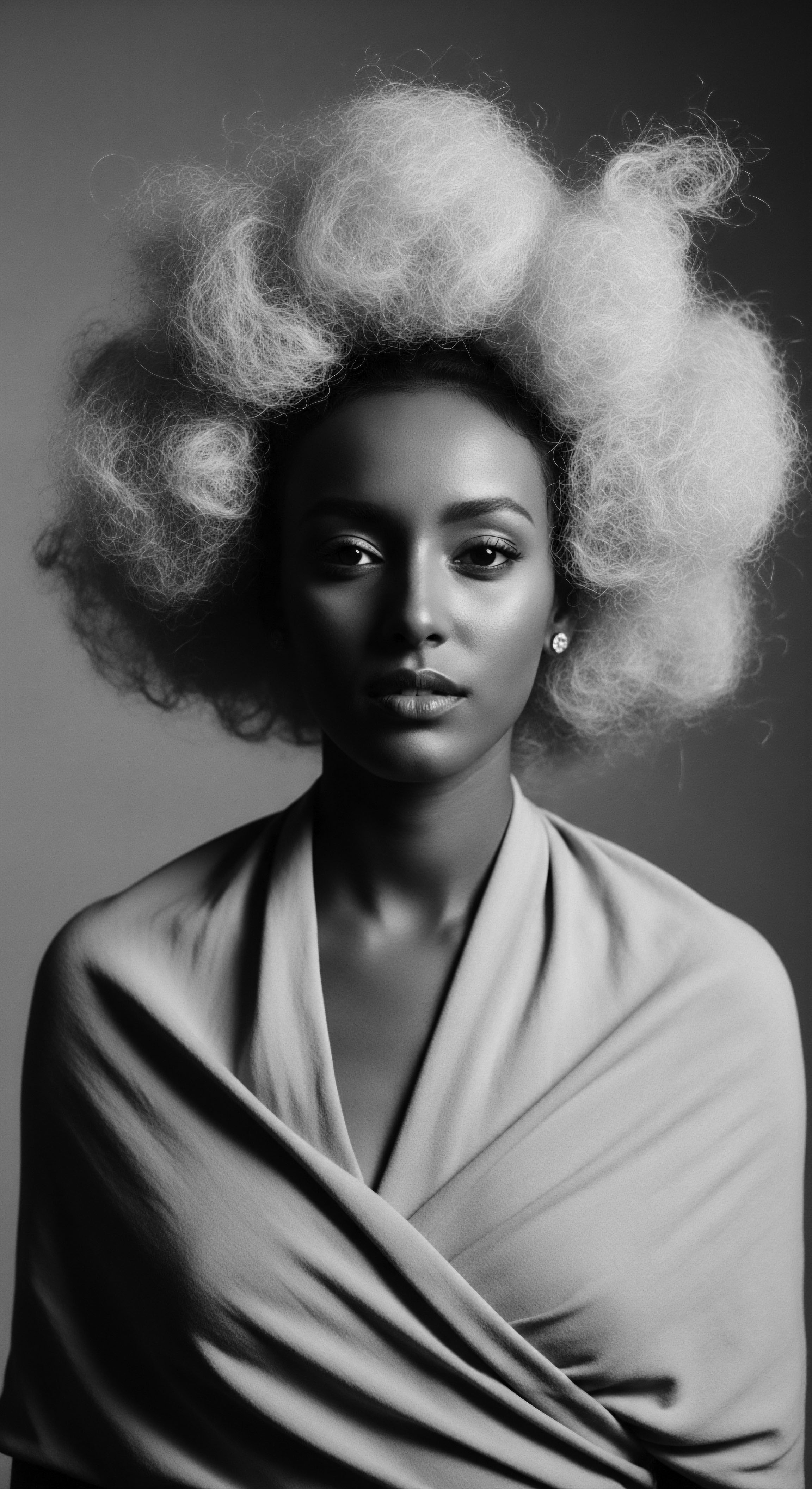
Anatomy and the Ancestral Strand
To truly grasp the legacy of perception, one must first settle into the biological hearth, the very anatomy of textured hair. Our hair, a complex protein fiber, emerges from follicles that are distinct in their shape. Unlike the perfectly round or slightly oval follicles that yield straight or wavy hair, those of textured hair are often more elliptical, even ribbon-like.
This unique follicular structure dictates the characteristic spiral or zigzag pattern of the hair shaft as it grows. The cortex, the hair’s primary bulk, and the cuticle, its protective outer layer, are also configured in ways that allow for these intricate curvatures.
Consider, if you will, the African hair follicle . Its elliptical shape causes the hair shaft to grow with numerous twists and turns along its length. These natural bends, while contributing to the hair’s volume and ability to interlock for protective styles, also create points of inherent weakness where the strand is more susceptible to breakage if not handled with reverence.
This biological reality was, over centuries, twisted into a narrative of fragility, rather than celebrated as a testament to its unique architecture. The history of this bias stretches back, deep into colonial eras.
The biological uniqueness of textured hair, far from being a flaw, signifies a profound adaptation and a rich heritage of growth patterns.
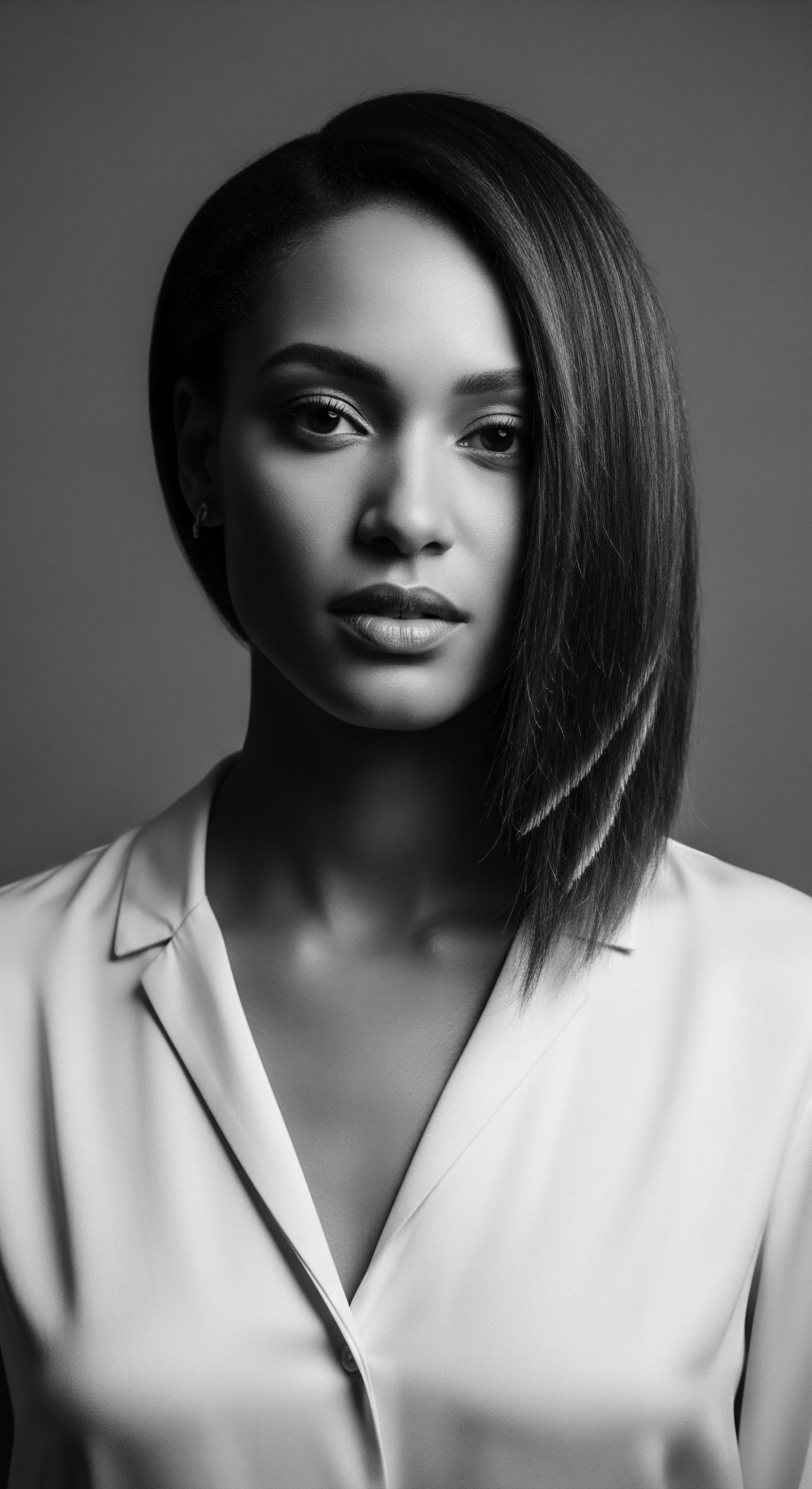
Shaping the World of Hair Terminology
The lexicon we employ to describe hair is not neutral; it carries the weight of history, often reflecting prevailing biases. Early attempts at “classification” by those outside of textured hair communities frequently defaulted to hierarchical systems that placed straight hair at the apex. Hair texture, which simply describes the pattern of the strand, became imbued with value judgments.
Terms like “good hair” or “bad hair” did not speak to health or vitality, but to how closely one’s natural texture approximated European ideals. This imposition directly influenced perceptions of textured hair growth, suggesting that its natural state was somehow less desirable or aesthetically pleasing.
The classifications we use today, while often more descriptive, still bear the remnants of these historical biases. For example, the Andre Walker hair typing system, while widely adopted, can inadvertently reinforce a hierarchy based on curl pattern, where looser curls (types 2 and 3) are sometimes perceived as more “manageable” or “desirable” than tighter coils (type 4). This systemic preference, often unspoken, colors expectations around hair growth.
A looser curl might appear to gain length more rapidly due to less shrinkage, leading to assumptions about the inherent growth rate of different textures. Such perceptions fail to grasp the truth ❉ all healthy hair grows at comparable rates; the perception of length simply differs.
- Type 1 Hair ❉ Straight, with minimal to no curl pattern.
- Type 2 Hair ❉ Wavy, possessing a gentle S-shape.
- Type 3 Hair ❉ Curly, forming distinct spirals and loops.
- Type 4 Hair ❉ Coily, characterized by tight, often Z-shaped patterns.
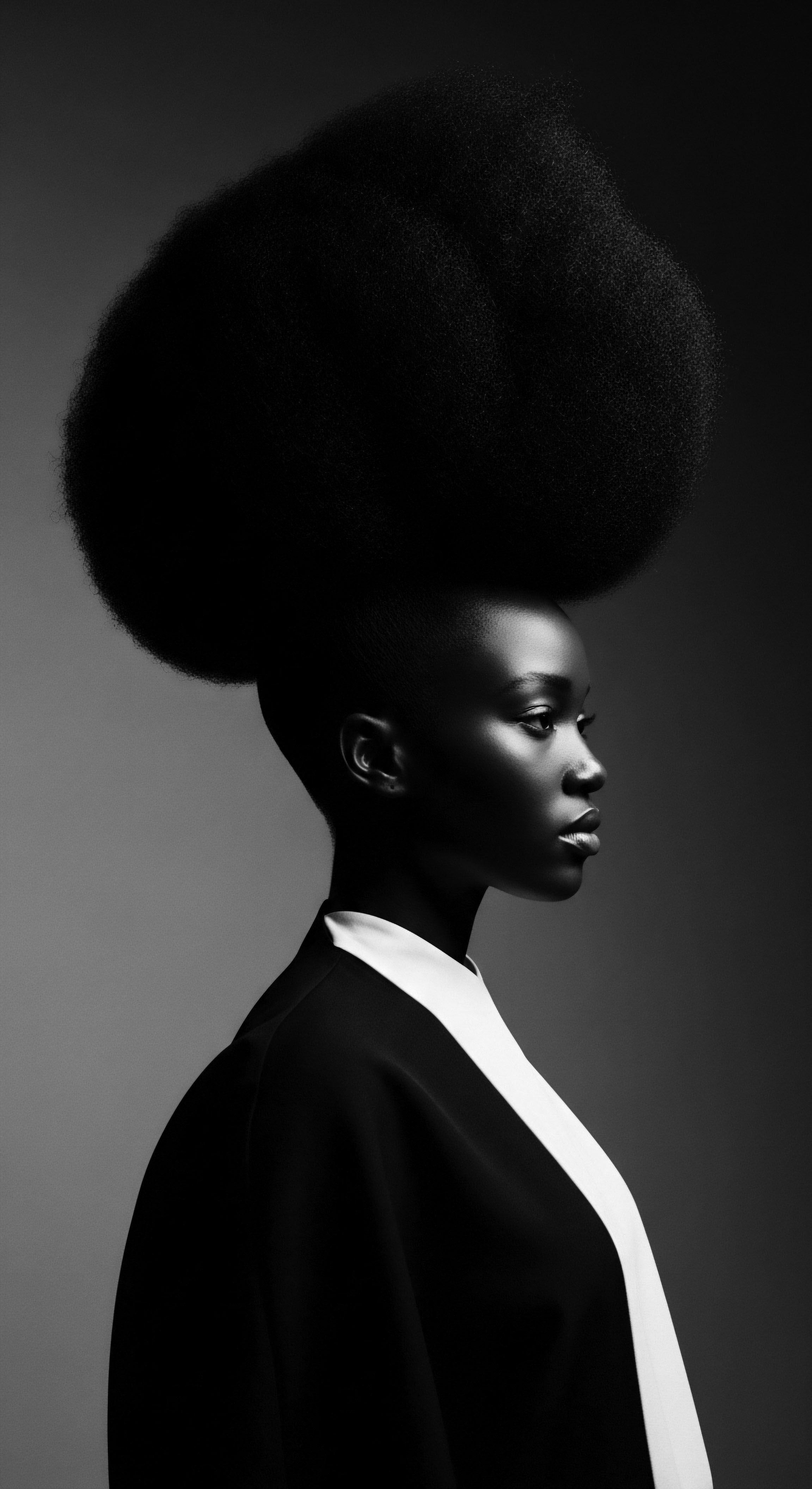
Unseen Influences on Hair’s Unfolding
Beyond the mere pattern, the systemic gaze also impacted how the very process of hair growth was viewed. For textured hair, growth is often obscured by its coiling nature, leading to significant “shrinkage.” This shrinkage, a natural attribute, means a strand of coily hair stretched out can be two or three times its apparent length when dry and natural. Historically, this was misinterpreted as slow growth or a lack of growth, rather than a unique characteristic of hair that retains moisture and resists gravity.
Consider the economic factors stemming from this biased perception. The market became flooded with products promising to “tame” or “straighten” textured hair, implying its natural state was unruly or problematic. This created an entire industry predicated on altering the inherent growth appearance, rather than supporting its natural health. The perceived “problem” of shrinkage became a marketing opportunity, reinforcing the idea that textured hair growth needed correction.
| Historical Perception (Influenced by Bias) Textured hair grows slowly due to its coily nature. |
| Ancestral Understanding and Modern Scientific Truth All hair grows at similar rates; shrinkage simply compresses apparent length. |
| Historical Perception (Influenced by Bias) "Good hair" is long and straight, signifying faster growth. |
| Ancestral Understanding and Modern Scientific Truth Length is a measure of retention, not inherent growth speed, and beauty spans all textures. |
| Historical Perception (Influenced by Bias) Textured hair is inherently fragile and prone to breakage. |
| Ancestral Understanding and Modern Scientific Truth Its unique structure requires specific care to prevent breakage, not inherent weakness. |
| Historical Perception (Influenced by Bias) The journey towards recognizing the true growth narrative of textured hair is a reclamation of heritage. |
The interplay of environmental factors and ancestral practices concerning hair growth also suffered from systemic misinterpretation. Traditional African communities, for instance, held deep respect for hair’s vitality. Their practices often focused on scalp health, protective styling, and natural ingredients, all of which supported the hair’s natural unfolding.
When confronted with European aesthetics, these wisdom traditions were dismissed, replaced by chemically harsh processes designed to achieve a foreign ideal. This severed a vital link to indigenous understandings of hair growth and care.
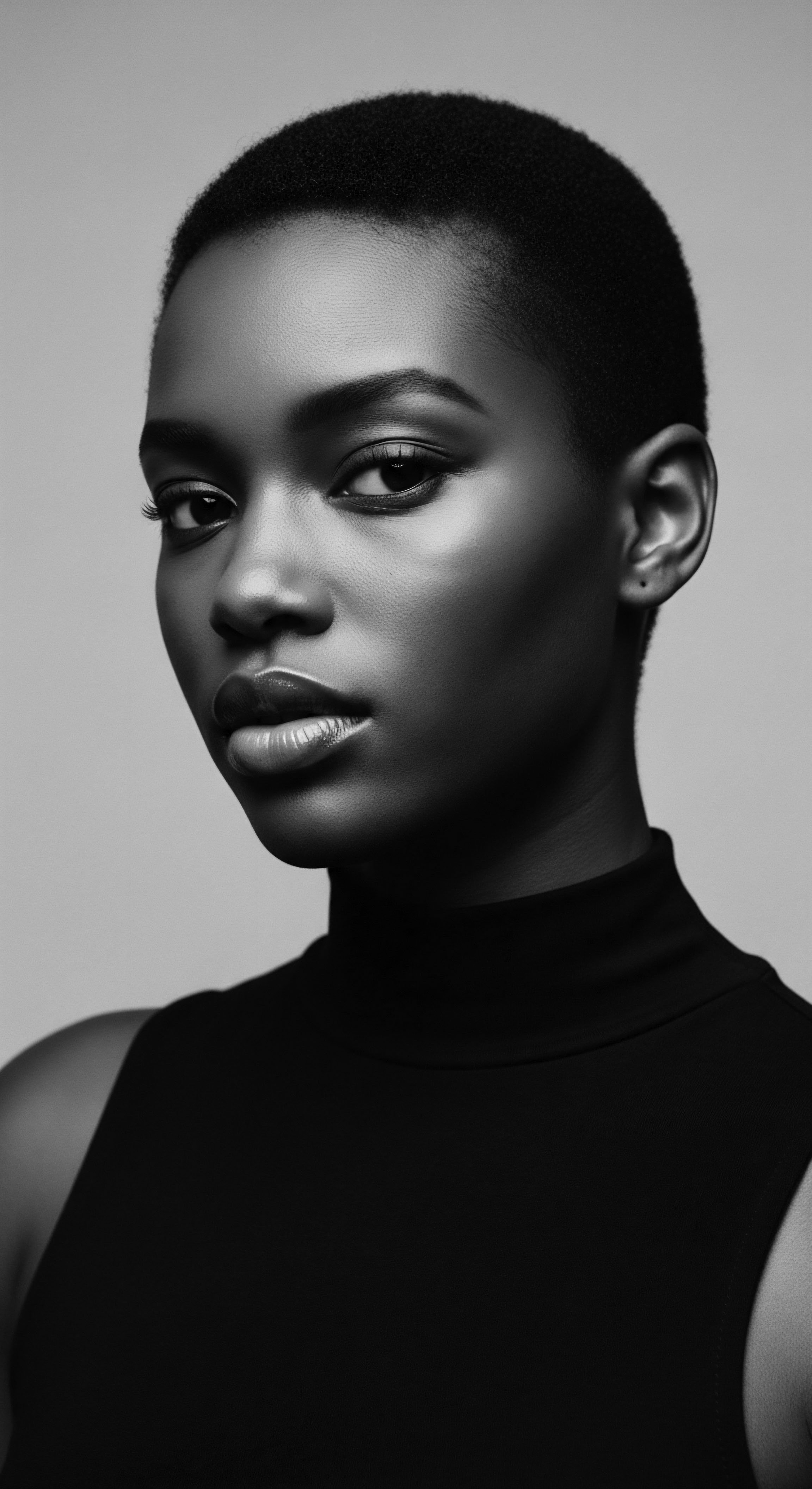
Ritual
The hands that styled, the tools that shaped, the very rituals surrounding hair became battlegrounds for perception, where systemic bias sought to erase or redefine ancestral practices related to textured hair growth. Styling, once an expression of clan, status, and spirit, was re-contextualized as a sign of disorder, unless it conformed. This re-contextualization profoundly impacted how the very act of growing and maintaining textured hair was viewed, both within and outside affected communities.
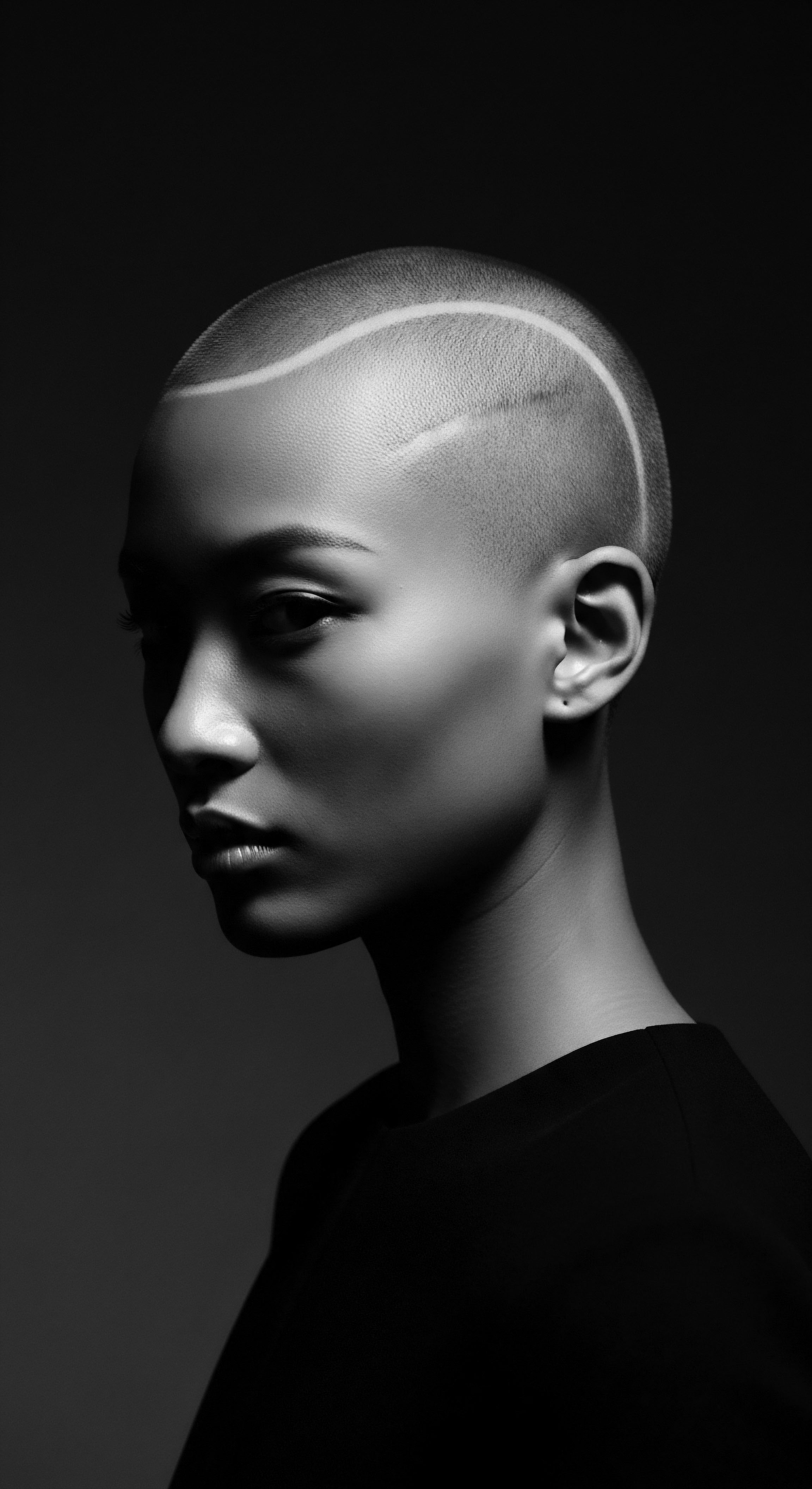
Protective Styling and Ancient Roots
Protective styles, from elaborate cornrows to intricate braids, represent a cornerstone of textured hair heritage. These styles, practiced for millennia across African civilizations, were not merely decorative. They served practical purposes, shielding the hair from environmental elements, preserving moisture, and, crucially, retaining length.
For hair prone to shrinkage and breakage at the ends, keeping strands neatly tucked away allowed for significant growth to be sustained. This careful cultivation was a testament to ancestral ingenuity and a deep understanding of textured hair’s needs.
Yet, systemic bias often dismissed these powerful cultural expressions as “unprofessional” or “unkempt.” In schools and workplaces across the Western world, natural hairstyles that allowed for hair to grow freely, or in protective formations, faced bans and ridicule. This societal pressure forced many to chemically straighten their hair, a process that often damaged the hair shaft and scalp, hindering healthy growth. The perception shifted ❉ natural growth was deemed problematic, while altered, length-inhibiting states became the accepted norm. This dynamic, born of racial prejudice, deeply scarred the communal and individual relationship with natural hair growth.
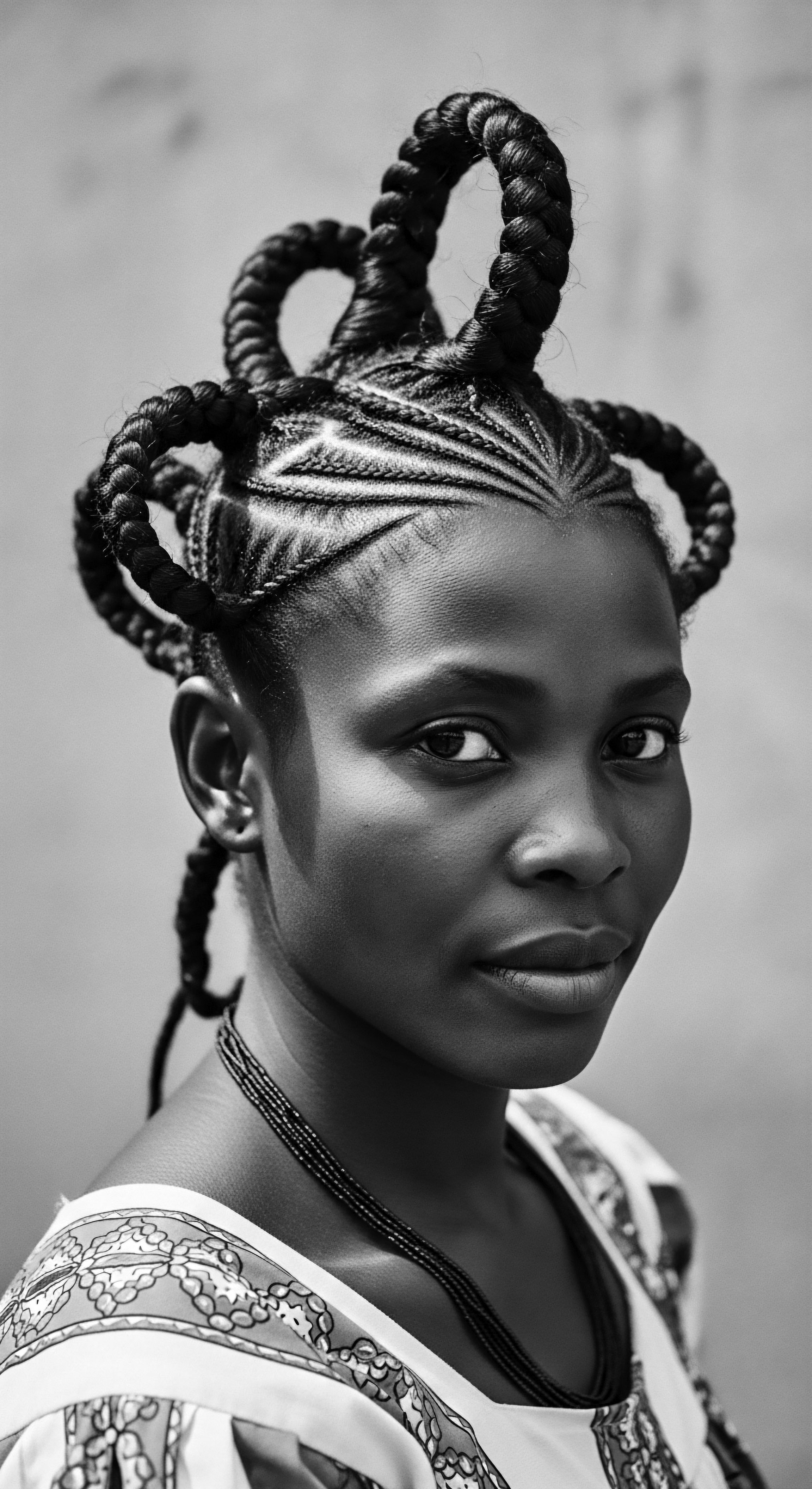
Traditional Definition and the Colonized Gaze
Natural styling techniques, aimed at enhancing the inherent pattern of textured hair, have always existed. The use of natural butters, oils, and specific manipulations to define curls or coils dates back through generations. These methods supported the hair’s integrity, celebrated its volume, and allowed it to grow as it naturally wished.
However, with the rise of colonial influences, these natural definitions were often juxtaposed against a smooth, linear ideal. The very visible volume and natural outward growth of textured hair was pathologized.
The straight-haired ideal, often associated with perceived “cleanliness” or “order,” began to dictate standards. This created a profound dissonance for individuals with textured hair, as their natural growth defied these imposed norms. The desire for “definition” became less about enhancing one’s own pattern and more about mimicking a foreign one. This contributed to a skewed perception of textured hair growth, where its natural state was seen as something to be managed or minimized, rather than celebrated for its unique beauty and ability to express volume.
The history of hair practices for Black and mixed-race communities mirrors a persistent struggle against imposed standards, impacting the perceived value of natural growth.

Wigs, Extensions, and the Burden of Assimilation
Wigs and hair extensions, while having a long and storied history across many cultures, took on a particular significance within Black communities under systemic bias. Initially, in many African societies, wigs and extensions served as symbols of status, spiritual connection, or ceremonial adornment. They were often crafted from natural fibers or human hair, skillfully integrated with one’s own. However, during periods of intense oppression, they became tools of survival, a means to conform to European beauty standards and avoid discrimination.
The widespread adoption of wigs and straightened extensions, particularly in the Americas, was often less a choice and more a strategic response to hostile environments. This indirectly influenced perceptions of textured hair growth. If one’s natural hair was deemed unacceptable in public or professional spheres, then covering or altering it became a necessity.
This reinforced the harmful idea that natural hair growth was somehow lacking, unable to meet societal expectations, thus contributing to an internalized bias that affected self-perception and ancestral connection. The heritage of these practices shifted from one of pure celebration to one of complex negotiation with oppressive systems.
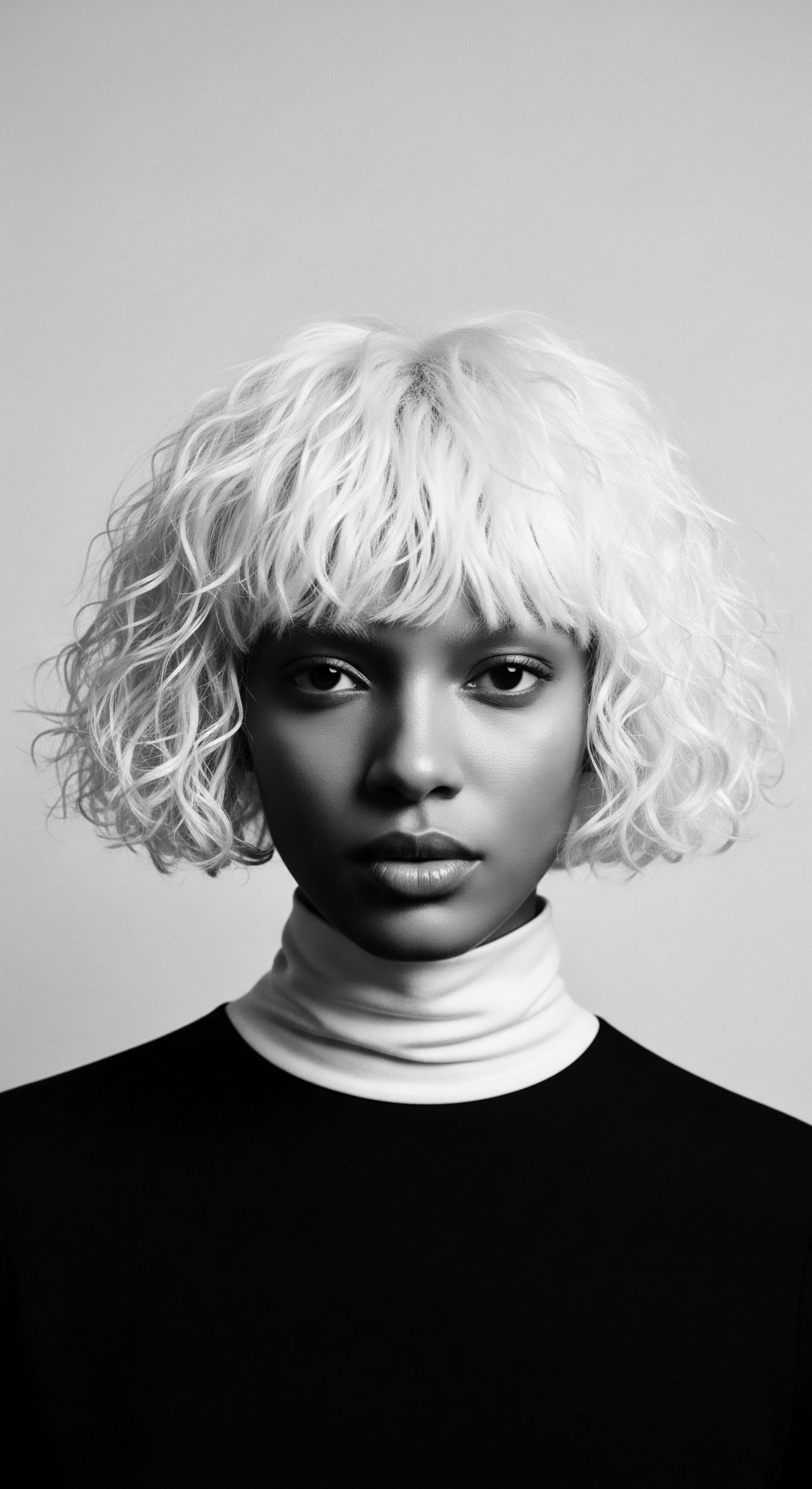
Heat Styling and the Quest for the “Acceptable” Growth Form
The advent and popularization of heat styling, particularly the hot comb and later flat irons, provided a new avenue for altering textured hair. While offering a temporary straightened look, frequent high heat application often leads to heat damage, altering the hair’s curl pattern permanently and hindering healthy growth. This pursuit of altered hair, often to gain acceptance or avoid negative perceptions, speaks volumes about the systemic pressure to conform.
The cycle of damage and regrowth, often undertaken in the pursuit of a perceived “acceptable” hair state, became intertwined with the very notion of hair growth. For many, growing out textured hair meant navigating the awkward “transition” phase from chemically straightened to natural. This period was often fraught with challenges, both physical (managing two textures) and psychological (confronting societal norms).
The simple act of allowing one’s hair to grow in its unadulterated form became a political statement, a quiet rebellion against entrenched perceptions. The cultural heritage of hair, once flowing freely, became constricted by the societal straight jacket.
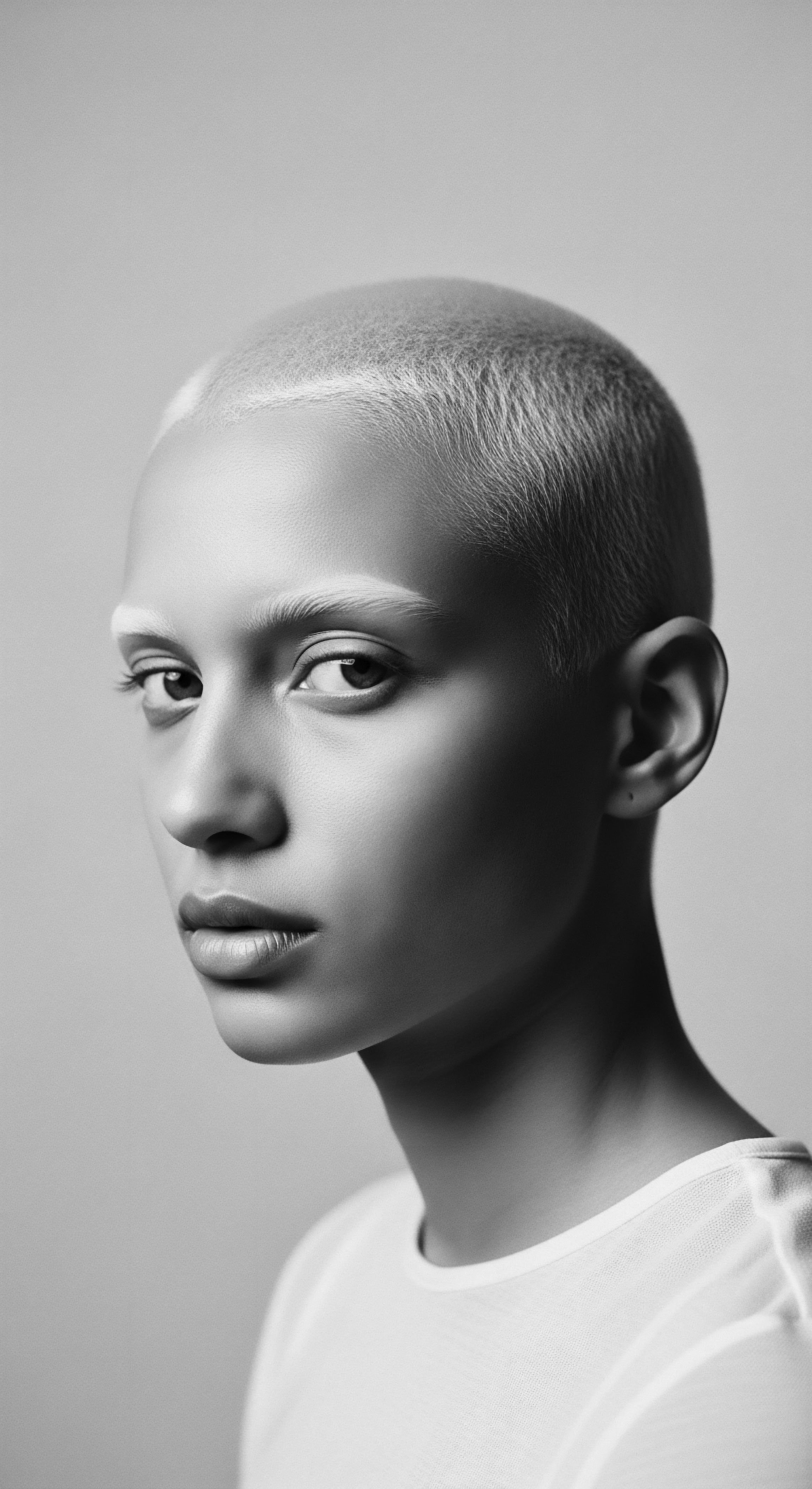
Relay
The subtle currents of systemic bias, running deep through generations, have profoundly shaped the very fabric of how textured hair growth is understood, cared for, and even valued. This relay of perception, passed down through societal norms, media representations, and even scientific studies, has often been distorted, requiring a conscious effort to reclaim the true narrative of our hair’s unfolding. It is here that we truly confront the full scope of the question ❉ In what ways did systemic bias influence perceptions of textured hair growth?

Regimens Rooted in Reclamation
The journey towards personalized textured hair regimens today is, for many, a direct response to historical biases. For generations, the dominant narrative promoted a “one-size-fits-all” approach to hair care, largely ignoring the specific needs of textured hair. This often resulted in damage from harsh chemicals, lack of moisture, and improper styling tools, all of which contributed to the perception that textured hair was “difficult” or “unmanageable.” The systemic failure to cater to these unique needs directly impacted the health and apparent growth of textured hair.
Ancestral wisdom, however, always prioritized tailored care. Traditional practices across the African diaspora , often utilizing natural ingredients like shea butter, coconut oil, and various plant extracts, focused on deep conditioning, gentle detangling, and protective styling. These practices inherently supported length retention and the healthy growth cycle.
The resurgence of interest in these methods is a powerful act of heritage reclamation, pushing back against the manufactured deficiencies propagated by biased systems. Modern science now often validates what our ancestors knew intuitively ❉ moisture, protection, and gentle handling are paramount for textured hair’s optimal growth.

Nighttime Sanctuaries and the Bonnet’s Legacy
Consider the simple yet profound object of the bonnet. Its widespread use within Black communities speaks directly to the unique needs of textured hair and, by extension, the historical lack of understanding from external systems. Cotton pillowcases, standard in many households, wick moisture from hair, leading to dryness, frizz, and breakage.
For textured hair, which is inherently prone to dryness due to its coiled structure, this moisture loss can severely impede healthy growth and length retention. The bonnet, typically made of satin or silk, creates a protective barrier, preserving moisture and reducing friction.
The ubiquitousness of the bonnet in Black households is not merely a modern trend; it is a continuation of ancestral wisdom, adapting traditional protective measures to contemporary living. Its necessity, however, subtly highlights how mainstream haircare industries, shaped by prevailing biases, often failed to account for the unique vulnerabilities of textured hair. The perception of healthy growth was often predicated on hair that could simply be left loose, disregarding the specific needs that necessitated protective rituals like bonnet-wearing. This illustrates how even seemingly small objects become powerful symbols of adaptive heritage against systemic oversight.
The wisdom of ancestral care, from chosen ingredients to nighttime rituals, directly confronts and corrects historical misperceptions of textured hair growth.

Ingredients and Their Ancestral Echoes
The choice of ingredients, too, stands as a testament to how systemic bias influenced perceptions of textured hair growth. For a period, many commercial products marketed towards textured hair contained harsh sulfates, mineral oils, and silicones. These ingredients, while potentially suitable for some hair types, often stripped textured hair of its natural oils, clogged follicles, and led to buildup, all of which could hinder healthy growth and cause scalp irritation. This market response was largely driven by a lack of appreciation for the specific needs of textured strands and a profit motive that prioritized cheap, readily available compounds over true hair health.
In stark contrast, ancestral ingredient practices centered on nourishing, natural substances that have stood the test of time.
- Shea Butter ❉ Sourced from the African shea tree, revered for its conditioning and sealing properties.
- Coconut Oil ❉ A staple in many tropical cultures, known for its ability to penetrate the hair shaft.
- Aloe Vera ❉ Used for centuries for its soothing and moisturizing qualities for scalp and hair.
These traditional ingredients supported the hair’s natural growth cycle by providing essential moisture, lubrication, and protection. The systemic bias that dismissed these traditional remedies in favor of synthetic alternatives effectively undercut generations of acquired knowledge regarding optimal textured hair growth. The movement back to these heritage ingredients is a powerful declaration of self-determination and an acknowledgment of long-ignored truths.
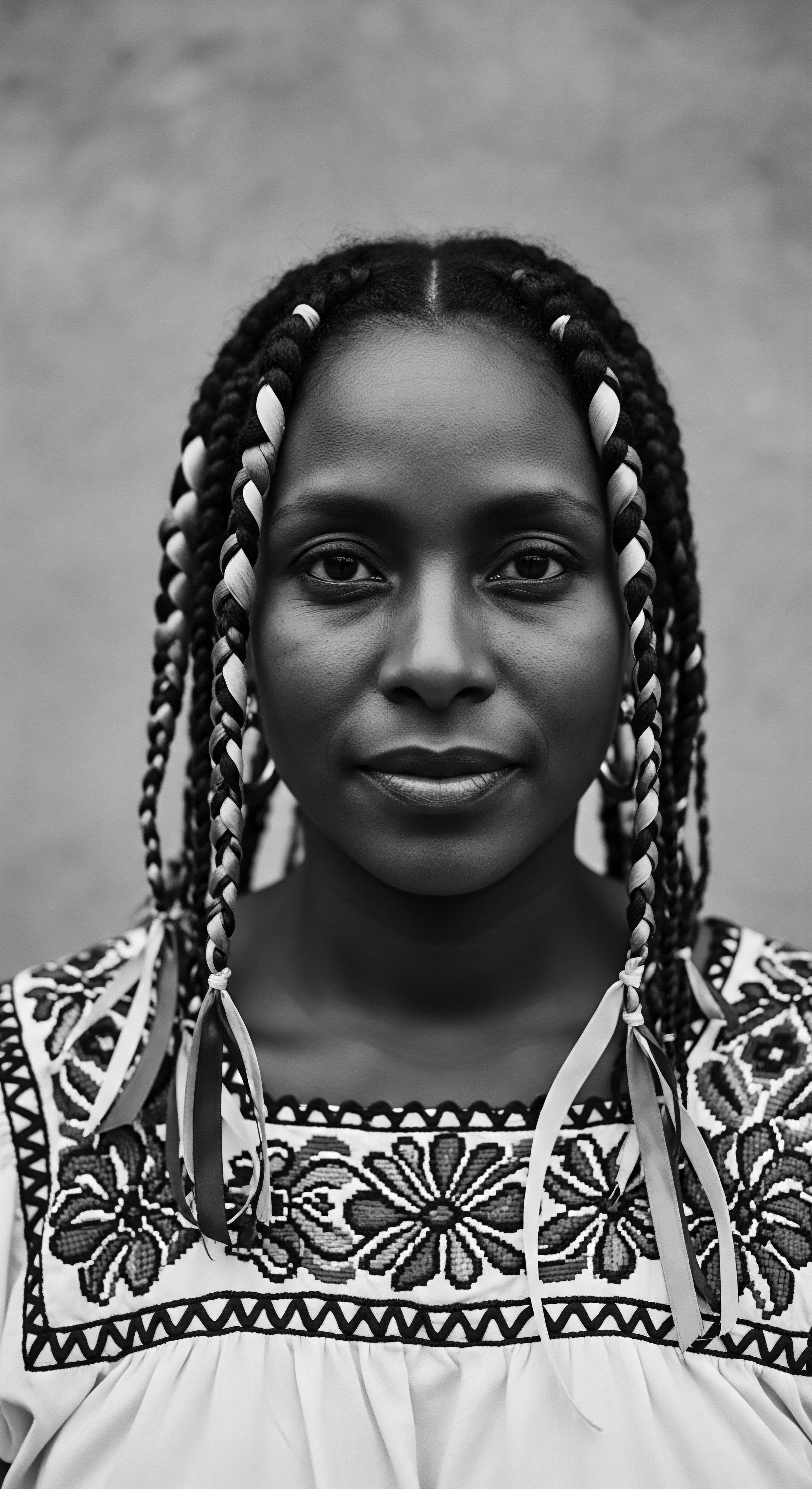
Challenging the Growth Narrative
The deep understanding of how systemic bias influenced perceptions of textured hair growth requires a critical look at the very metrics of beauty and health that became standardized. The idea of “length” as the ultimate indicator of hair health and growth became a pervasive bias. For textured hair, with its inherent shrinkage, achieving visually striking length often required specific protective styles and a profound commitment to moisture. This metric often overlooked the sheer volume, resilience, and unique aesthetic possibilities of natural textured hair in its un-stretched state.
Indeed, a study by Pew Research Center (2019) revealed that a significant portion of Black adults reported experiencing discrimination related to their hair, specifically citing instances where natural hairstyles were deemed “unprofessional” in workplaces or schools. This societal pressure, directly linked to biased perceptions of how “acceptable” hair should look (often meaning straight and long), undoubtedly influenced how individuals perceived their own hair growth. If natural growth was met with professional or social penalties, then the perceived value of that growth diminished, leading many to alter their hair, sometimes at the expense of its health.
This social pressure, and the choices it forced, obscured the true potential and beauty of textured hair’s growth, making the inherent struggle of growth against adverse perceptions a lived reality for many. The legacy of such bias is deeply etched into collective memory, a continuous call to honor and uphold the hair’s intrinsic unfolding.

Reflection
The coiled and kinky strands that adorn so many heads across the globe carry not simply genetic information, but generations of stories, wisdom, and struggle. The ways in which systemic bias warped perceptions of textured hair growth underscore a profound cultural truth ❉ that what is natural and intrinsic to one group can be pathologized and denigrated by another when power dynamics are at play. Yet, within this narrative of historical challenge lies an equally potent story of resilience and resurgence.
From the anatomical distinctiveness that allows our hair to rise majestically against gravity, to the ancestral rituals of care and protection, every aspect of textured hair growth has been touched by this historical interplay. The journey is one of unlearning, of dismantling ingrained biases that suggested our hair was anything less than perfect in its organic state. It is a journey of celebrating shrinkage as a sign of vitality, of honoring the density and volume that straight hair cannot replicate, and of cherishing the myriad patterns that speak to a vast, vibrant heritage.
Roothea’s ethos, “Soul of a Strand,” is a living archive, a continuous conversation with this history. It calls us to look upon our hair not as a problem to be solved, but as a sacred connection to those who came before us, a visible lineage that testifies to enduring beauty and strength. The evolving understanding of textured hair growth, moving beyond reductive biases to a holistic appreciation, is not just about aesthetics; it is about identity, autonomy, and the profound act of loving what is inherently ours. As each coil unfurls, it writes a new chapter, reclaiming the narrative, strand by beautiful strand.
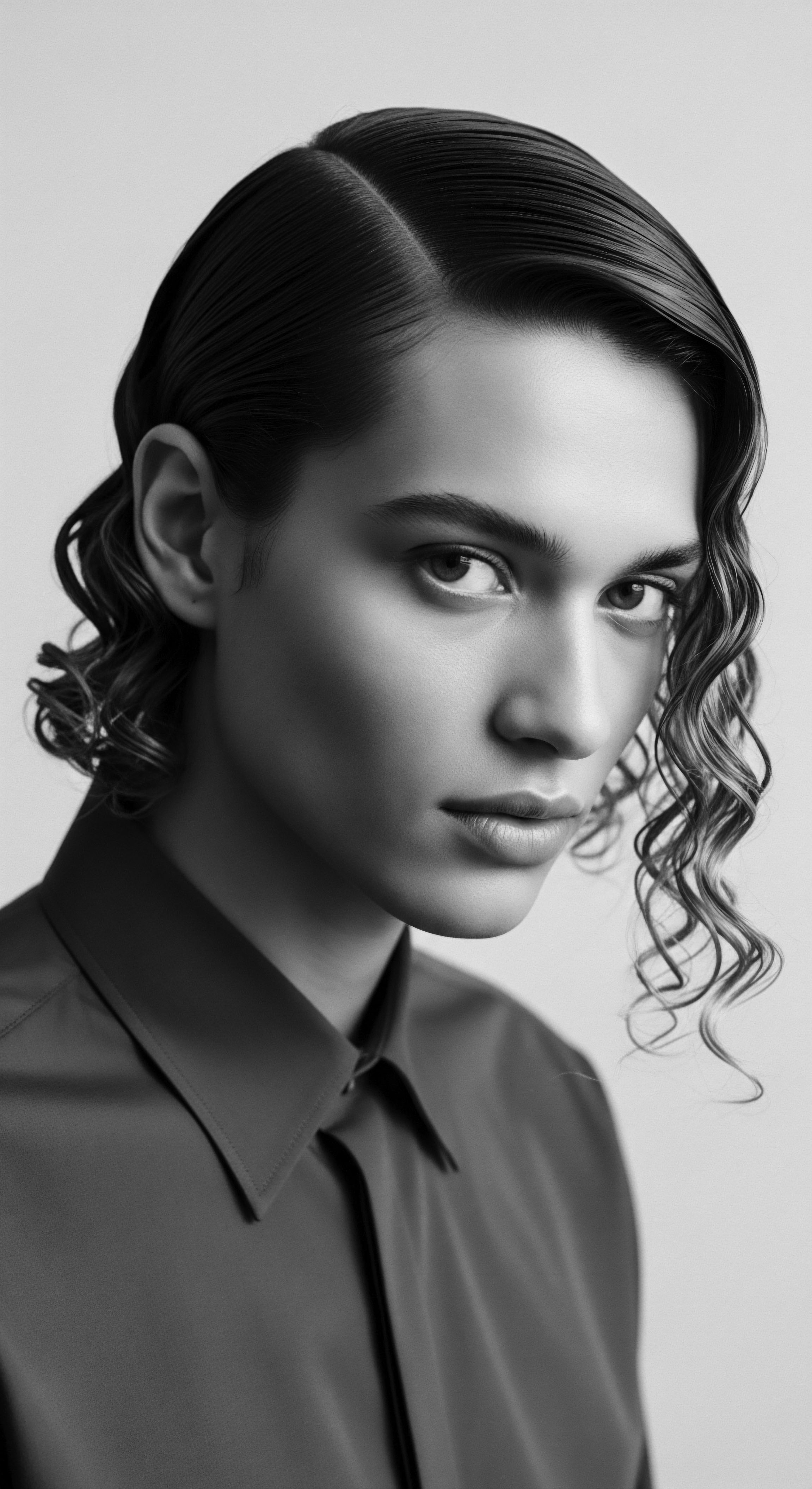
References
- Byrd, A. L. & Tharps, L. D. (2014). Hair Story ❉ Untangling the Roots of Black Hair in America. St. Martin’s Press.
- Durham, A. (2015). Black Hair ❉ Health, Culture, and the Politics of Beauty. Routledge.
- Kibbe, M. (2011). The Science of Black Hair ❉ A Comprehensive Guide to Textured Hair Care. CreateSpace Independent Publishing Platform.
- Mercer, K. (1994). Welcome to the Jungle ❉ New Positions in Cultural Studies. Routledge. (Contains essays on cultural politics of Black hair).
- Pew Research Center. (2019). Black Americans’ Views on Hair and Discrimination. (Note ❉ While Pew Research Center is a website, this reference is for a specific report/study published by them, making it an academic/research publication as requested).
- Sweet, S. (2013). The Straightening of America ❉ The Cultural History of Black Hair. University of Arkansas Press.
